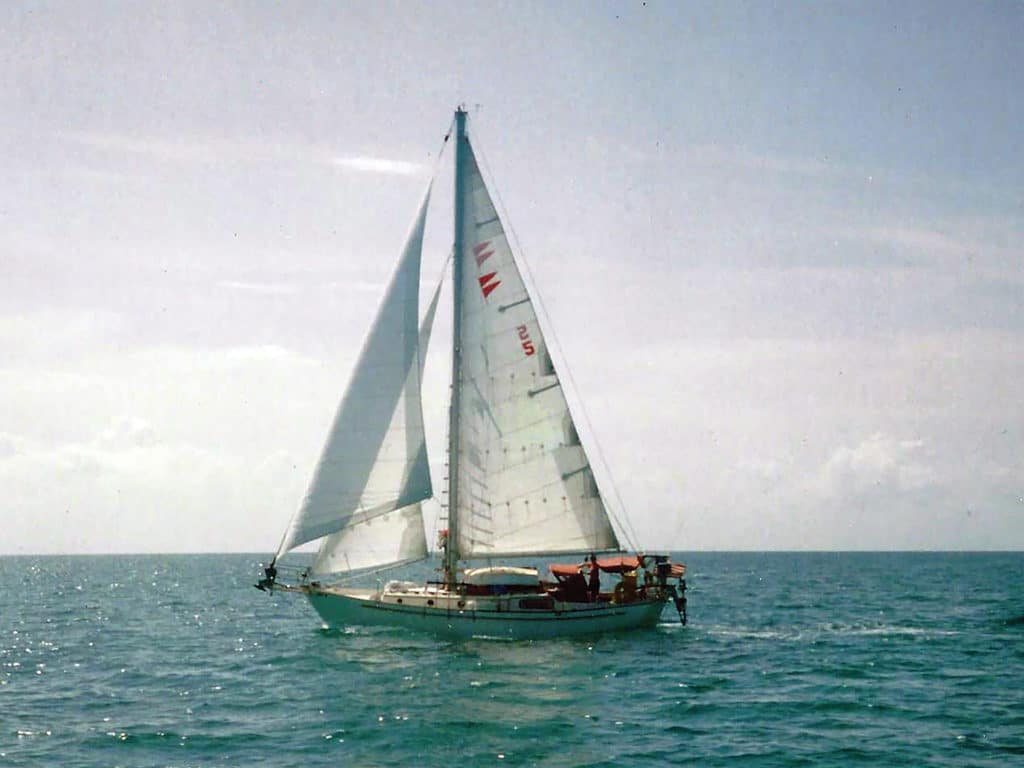
It’s a dim, drizzly morning, and the truck that bore Kraken from Florida awaits us at the entrance to the marina. For all that I’ve officially lived in New Jersey most of my life, I’ve never berthed a boat here, and it seems strange.
And the shape-shifter on the trailer in front of me is even stranger. My husband, Tom, and I bought the Kaiser Gale Force 34 in 1990 to cruise the world while we let the recession of the late 1980s sort itself out. Here she was, back in our possession after 25 years away. Most of the deep-ocean sailing we’ve done has been more recent on Oddly Enough, a Peterson 44 we sailed from Florida through the Panama Canal to Borneo, halfway around the world, over 10 years. Her voyage also started on the back of a truck, going the other way to Florida for a major refit.
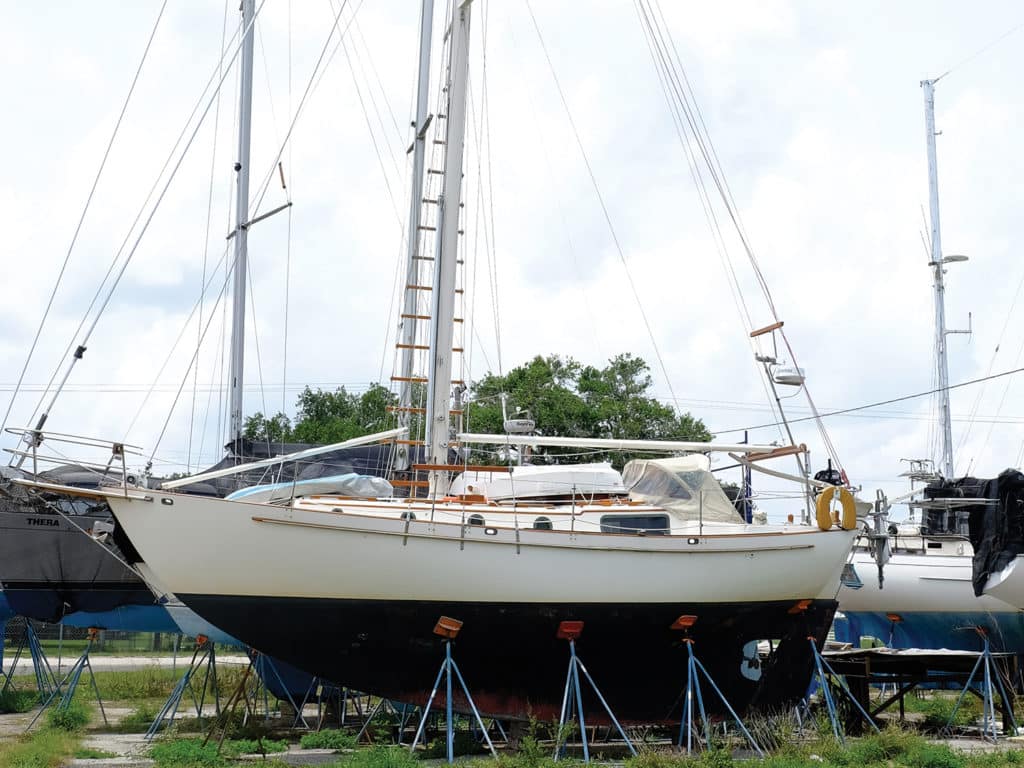
This time our refit started in Florida but needed to be continued close to where we are caring for my elderly mother and can drive down for an afternoon’s work.
Once Kraken is set up on jack stands, we climb onto her decks and sort out gear. When we bought her back, she was full of other people’s stuff; at least two sets of owners appeared to have left all their combined kitchen gear, books and clothing. Much of the clothing we removed this past summer in Florida, our hands sweating as we rifled through woolen sweaters and scarves left by Canadians. We also found odd bits of gear that went back to our original tenancy: a maintenance log updated through scattered years; jacklines I made up for our passage to the Caribbean; mosquito screens designed for the hatches.
But stranger than that is the way Kraken weds fluidly with Oddly Enough. The Peterson 44 is a center-cockpit boat, and the distance from the companionway stairs to the inside hatch on the anchor locker is not much longer than Kraken; the extra 10 feet are largely taken up by the aft cabin and deck. By instinct, down below I try to turn past the companionway steps to the low passage aft—which of course isn’t there. Kraken doesn’t have even a quarter berth; her interior ends with the fridge and battery bank. Yet their classic interiors are remarkably similar. Unlike, say, if Kraken were a catamaran or a more modern sloop.
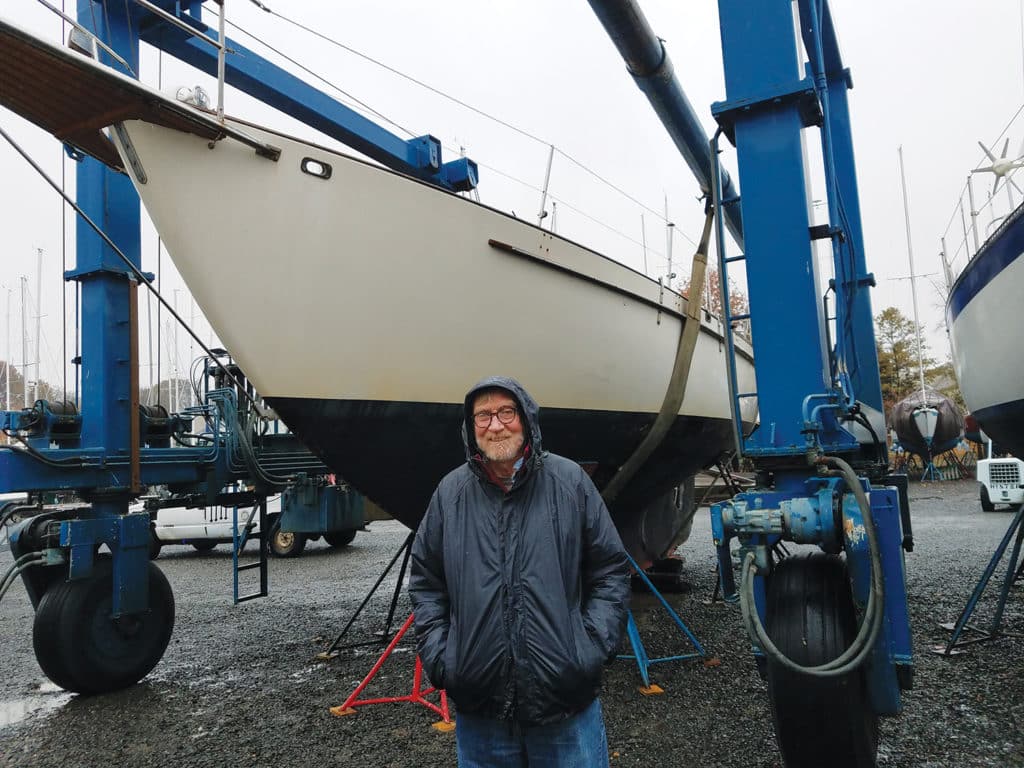
I wouldn’t do this in a house, not in the same instinctual fashion, but a boat becomes an exoskeleton when you live and sail on her for years. She’s this shell we cross oceans on, trusting to keep us safe. Every inch of Oddly Enough was familiar, and my body knew how to shift itself to intimately navigate the space. You’d never get this on land, where your home doesn’t turn on its side so the curve of the hull becomes your support space, or threaten to go farther so the ceiling becomes wall. Sailor bodies and boats are bound by muscle memory. On Kraken’s deck, I have to relearn a topside configuration that lacks a side deck outside the cockpit and to climb out of the cockpit through a narrow gap.
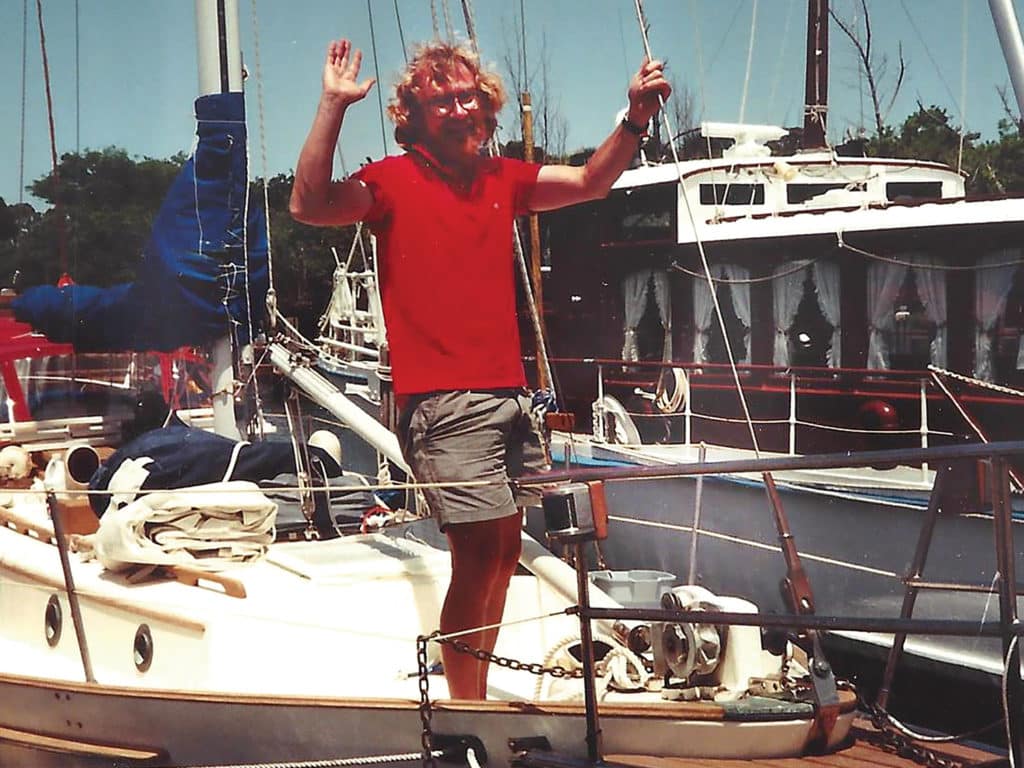
But by day three of clearing out, Kraken begins to emerge from other people’s stuff. As the interior space—where we will (hopefully) one day live again—emerges, my brain pings with hints of familiarity. I still can’t for the life of me think how I organized myriad ropes without a dedicated locker as I had on Oddly Enough, let alone where we once kept towels and bed linens, which wouldn’t even be an issue on a completely unfamiliar boat because everything would need to be designated anew.
Trust at sea is amorphous, not something you can point your finger at and say, “That’s why I have it.” Trust in a boat grows over time and experience. The trust Tom and I had on Oddly Enough was rooted in a matured sense of her as a being, not just an object. I don’t mean we thought of her as some kind of demigod, but rather that she existed in her own right, with survival goals and even comfort requirements that we shared in.
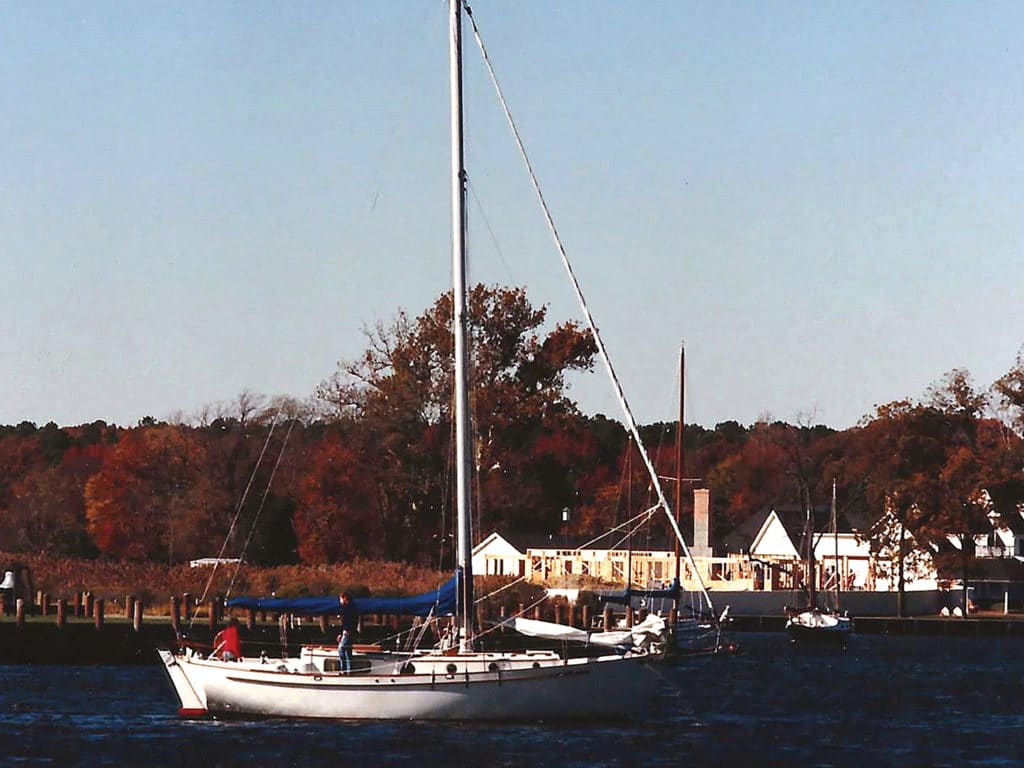
As I teeter around on and in Kraken’s winter-cold hull, banging my toes into corners, I have to remind myself that I once owned her, that I sailed her. Yet gradually it’s like getting to know a cat you’ve been away from; you stroke her fur, feel her bones, remember how to elicit a purr. I open cabinets, run my fingers over sheets and halyards, familiarize myself with star cracks in her thick deck gelcoat that were there years ago. And I remember.
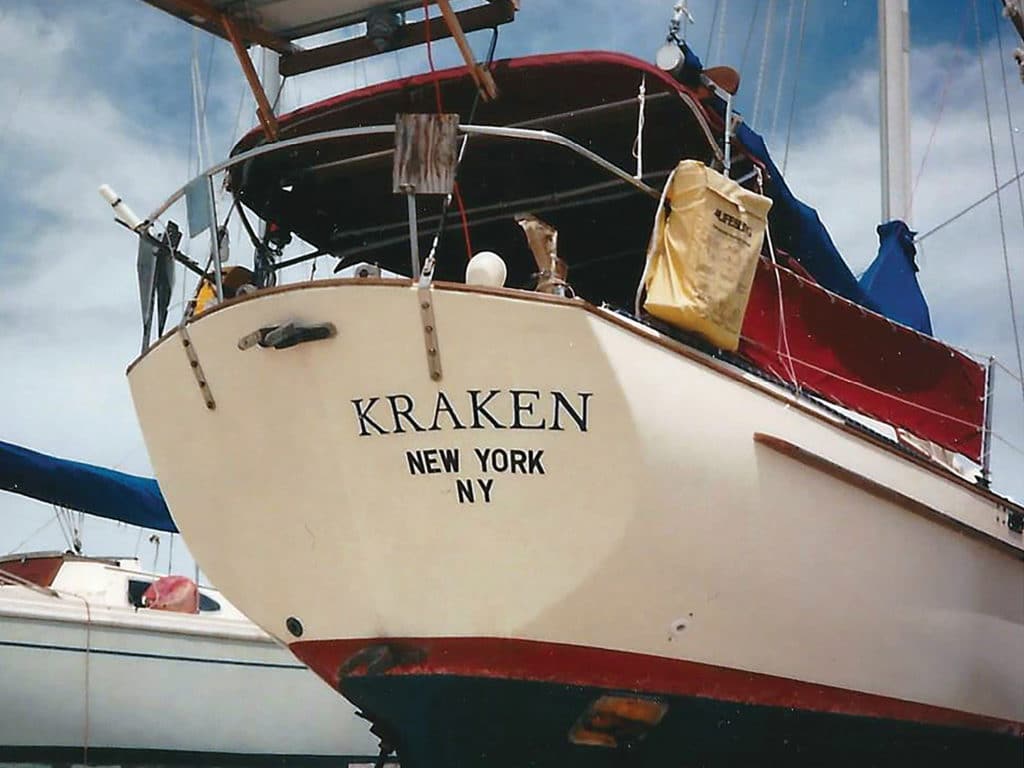
We didn’t cross oceans on Kraken, but what I remember most is her surprising agility and sailing capability despite having a full keel and traditional shape. This is what attracted us; Tom wouldn’t go off in a risky boat, and I didn’t want a double-ender like a Westsail 32, which Kraken superficially resembles, so we compromised. I grew up a small-boat racer, and sailing anything comes more easily than motoring. On two memorable occasions, Kraken’s ability to sail surprisingly closehauled allowed us to get to a safe anchorage—one on our first foray out of Chesapeake Bay, and later at the end of our time on her.
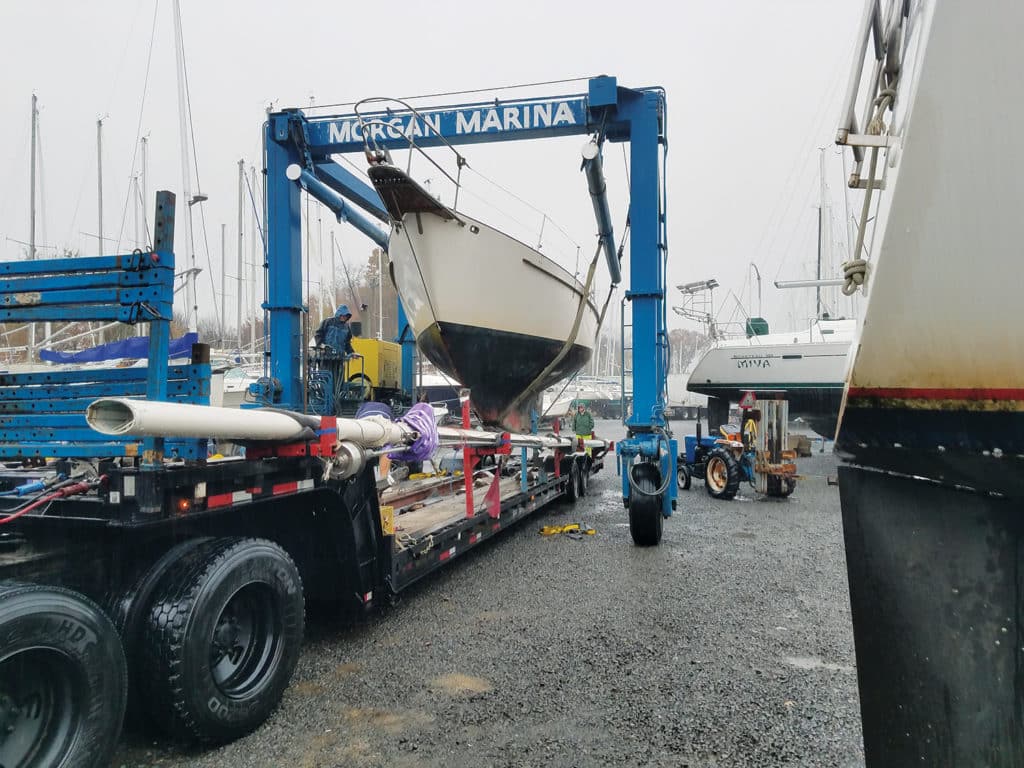
In Deep Survival: Who Lives, Who Dies, and Why, author Laurence Gonzales describes an elaborate system involving the hippocampus and other areas of the brain that creates “an analog of the world and your motion, position and direction of travel within it. It works in concert with other systems to locate you in your mind.” The hippocampus is associated with memory, and cells involved in such navigation are constantly being reprogrammed. Any time you visit a new place, your brain tries to make a new map. “You create not just routes but maps of areas of your environment, such as a room, your house, or your whole neighborhood.” These are known, Gonzales says, as mental maps, and their creation and re-creation affects a person’s ability to act at times when the organism has to respond to a changing situation under stresses like weather, fatigue, dehydration and anxiety.
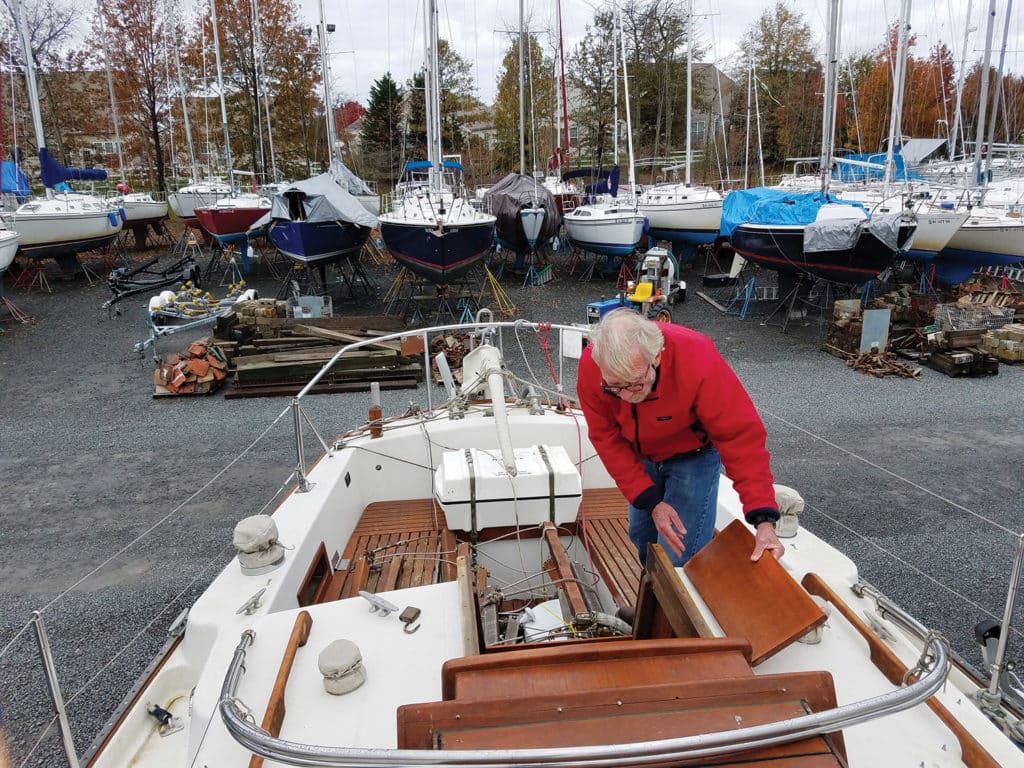
Routine life on a sailboat is not subject to undue stress, but especially on the open sea, at any moment circumstances can switch and turn the environment hostile, requiring a sailor to act and react. Making a mental map is what I did on Oddly Enough. You can’t make a mental map of what would happen in a storm or a serious accident, but having a detailed one of what you would use to face it—your sailboat—is important. This, as much as anything, might be what we talk about when we say we trust a boat. If I’m below off watch, and a stay breaks, I’m more likely to be able to rush on deck safely without tripping on cockpit coamings and make rapid decisions about saving the rest of the rig if I don’t have to examine my surroundings to figure out what the hell is going on.
It’s almost a cliché that a sailor thinks their own boat is the most beautiful. Our first season in the Bahamas on Oddly Enough, we were dinghying past the entrance to a hidden anchorage and saw the unmistakable transom of a Gale Force 34. Noting her distinctive terra cotta canvas, we recognized Kraken through binoculars. No one answered our knock, so we motored in a slow circle, drinking her in. She was, and is, a beautiful boat.
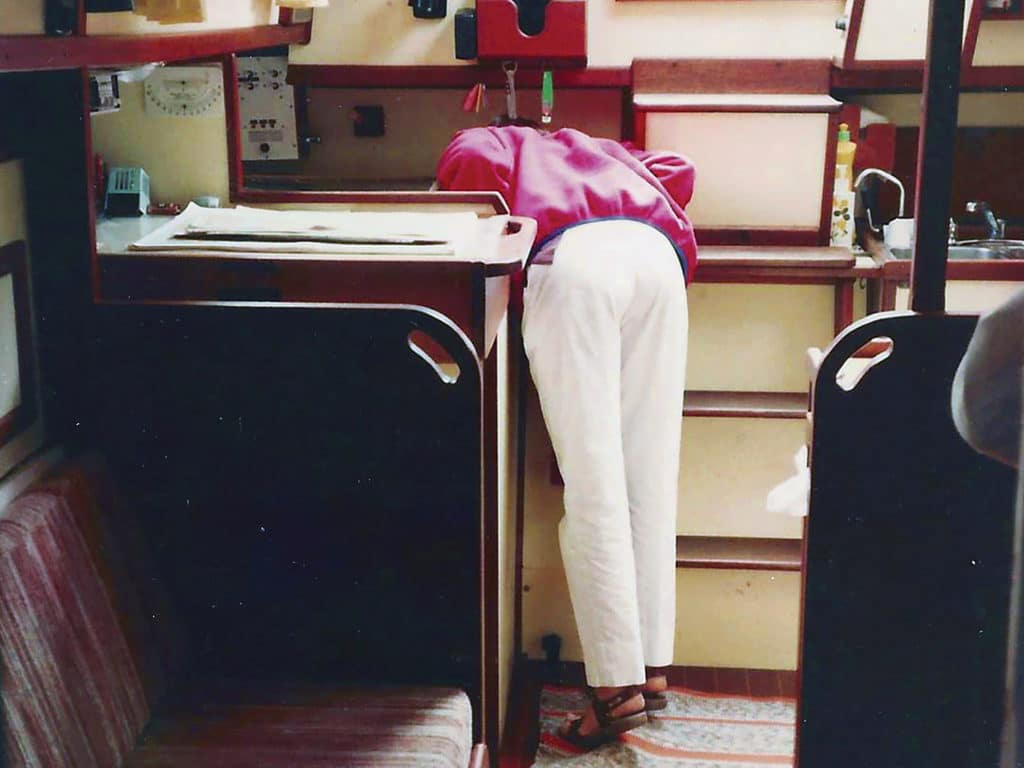
Beauty isn’t everything, and we didn’t cross oceans on Kraken. Though we bought her with dreams of circumnavigation, she ended up feeling too small, and I wanted a wheel instead of a 9-foot tiller. After several years in the Caribbean, we joined the northward migration back to the States to make money and buy a bigger boat. Now we are downsizing, and giving Kraken a second chance. In an odd way, this move fits with Gonzales’ thesis about memory maps. We looked at other boats in the size range we wanted, but each of them would have taken time to get to know, as well as refit work. I don’t want to take that time now. I look forward to my first day on the water when I can start crafting a relationship and turn Kraken into an exoskeleton. Then she too can become a being, which happens to a boat only when she is in a relationship with humans.
Ann Hoffner and her husband, photographer Tom Bailey, are rebuilding a soggy rudder this winter and plan next spring to launch Kraken, their Kaiser Gale Force 34.








